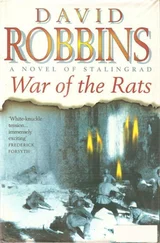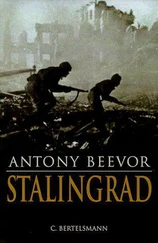Goerdeler concluded that, after the chaos of National Socialism, the German people would look back to the Second Reich as a time of stability and prosperity and associate that with the monarchy. For the prince’s sake, he would do nothing to draw him into the plot. Ludwig would remain on the shelf as a possibility. 18
The North Atlantic, 25 April 1942
For the U-boat crew somewhere in the North Atlantic, their kill of an American merchant ship off Iceland had been ecstatic. The captain had ordered a round of schnapps to each man since it was their boat’s first sinking. The boat was one of the hundreds produced by German yards and now infesting the waters between Britain and North America. Many ranged ever farther, to the Mediterranean, the South Atlantic, and beyond to the Indian Ocean. A few even reached Japan to carry vital high-value war supplies to their ally.
Yet, while the taste of the liquor was still in the mouths of this crew, the sound of the dying ship as it broke up and sank stopped every man in his celebration. The groans and shrieks of rending metal were all too human as they echoed through the water and the U-boat’s hull. It was like a wounded man in no-man’s-land screaming out his death agonies, something all too common to their brothers fighting in Russia. Like the German infantry, the Landser, they would get used to it.
For the Allies the war had reached a crisis. In the first months of 1942, the Germans had sunk an average of over 500,000 tons of shipping each month. Imports into Britain fell by 18 per cent compared to 1941. 19At the same time, both Britain and the United States were giving priority to shipments of war materials to the Soviet Union. The strain on resources was simply not sustainable.
Two events in the murky world of cipher decoding had thrown the Allies into their precarious position. The German Navy’s B-Dienst (Beobachtungs-dienst, Surveillance Service), and the xB-Dienst (Decryption Service), which had already broken the main British naval cipher by 1935, had broken Allied Naval Cipher No. 3 in February. This was the system by which the British, Canadians and Americans coordinated their efforts in the Atlantic. The U-boat killings soared. Now the Germans could see into the Allies’ convoy communications, while the Allies were suddenly blinded. The British had largely broken the German Enigma cipher system by early 1942 and even the more complex German naval version. 20Then the German Navy cipher department added another layer of complexity to its Enigma machine by adding a fourth wheel that baffled the British codebreakers at their Bletchley Park centre. Shipping losses soared. 21
Office of the Chief of Naval Operations, Washington, DC, 25 April 1942
Admiral Ernest King was in a foul mood, a normal setting for the man. His own daughter joked, ‘He is the most even-tempered person in the United States Navy. He is always in a rage.’ This angry temperament made him the most disliked senior officer of the war, but he concentrated his loathing especially against the British ally of the United States. General Ismay, Churchill’s military chief of staff, described him as ‘tough as nails and carried himself as stiffly as a poker. He was blunt and stand-offish, almost to the point of rudeness. At the start, he was intolerant and suspicious of all things British, especially the Royal Navy; but he was almost equally intolerant and suspicious of the American Army.’
His Anglophobia was so pronounced that he had ignored British suggestions after Pearl Harbor to black out American coastal cities and run merchant shipping in more easily protected convoys. The result had been a staggering loss of 2,000,000 tons of shipping in the months after Pearl Harbor.
Now the British were trying to organize the first major British-American naval effort of the war, the escort of a large convoy to Russia to be provided in part by an American battleship and heavy cruisers. King had finally agreed to this against his every Anglophobic instinct, and he knew no good would come of placing American ships under the Royal Navy’s command.
He especially did not like the British First Sea Lord, Admiral Sir Dudley Pound, who had the reputation of being something of a back-seat driver. It did not help when Pound remarked to King in May that ‘These Russian convoys are becoming a regular millstone round our necks.’ 22That attitude was already causing friction with the commander of the Home Fleet, Admiral Sir John ‘Jack’ Tovey. Unlike King, Pound’s staff found their boss easy to work with, despite his habit of dozing off at meetings. He was suffering from a degenerative hip condition which robbed him of sleep. Infinitely more serious was the brain tumour that the Royal Navy’s examining physician did not report.
So King gritted his teeth as the USS Washington, one of the Navy’s two new North Carolina Class battleships, sailed as flagship of Task Force 39 (TF.39) along with the heavy cruisers Wichita and Tuscaloosa, the aircraft carrier Wasp, and four destroyers, in support of the Arctic convoys to Russia. The Washington was one of the most formidable battleships in the world at 36,000 tons and armed with nine 16-inch guns. It would join Tovey’s force of the battleship Duke of York (38,000 tons and ten 14-inch guns), heavy cruisers Cumberland, London, and Norfolk, light cruiser Nigeria, aircraft carrier Victorious, and five destroyers.
Trondheim, Norway, 25 April 1942
The reason that King had to force himself to send TF.39 and its heavy ships to escort the Russia-bound convoys lay under camouflage nets in the fjord at Trondheim. These ships were what Admiral Raeder would have called a fleet in being, that ever-present threat that forced the British to keep a strong home fleet.
The menace anchored at Trondheim was the 43,000-ton battleship Tirpitz, sister ship to the lost Bismarck, and armed with nine 15-inch guns. Laid down in 1936 and commissioned in February 1941, it was the first battleship with a welded hull and armour. With it were the heavy cruisers Hipper, Lützow and Admiral Scheer, each with six 11-inch guns. A half-dozen destroyers balanced out this force. Combined with some of Admiral Dönitz’s submarines and attack aircraft from Goring’s Luftwaffe, these ships loomed as a constant threat to any convoy that dared make the long voyage to Russia.
As soon as Tirpitz had been sent to Trondheim in January, Churchill had made clear the import of its presence. He demanded:
the destruction or even crippling of this huge ship… The entire naval situation throughout the world would be altered… The whole strategy of the war turns at this period on this ship which is holding four times the number of British capital ships paralysed, to say nothing of the two new American battleships retained in the Atlantic. I regard this matter as of the highest urgency. 23
Another German task force anchored even farther north at the port of Narvik. The twin battlecruisers Scharnhorst and Gneisenau (nine 11-inch guns) and heavy cruiser Prinz Eugen (eight 8-inch guns), and four destroyers. Scharnhorst and Gneisenau were battleships in everything — tonnage and armour — but their guns. Production problems led to the postponement of their fitting out with 15-inch guns. These ships had been stationed in France, but the Royal Air Force (RAF) had too great an interest in bombing them. At the same time Hitler wanted them stationed in Norway to prevent any Allied landings. In a bold dash codenamed Operation Cerberus they had slipped through the English Channel unharmed. 24The British codebreakers at Bletchley Park were still struggling to overcome the latest security upgrade of Enigma and so were unable to warn the Royal Navy of the German plan.
Читать дальше












